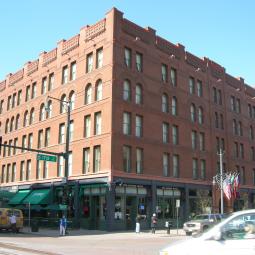After the debut of railroads in 1870, the city of Denver was transformed from a small mining town, to a growing metropolis. By 1890, Denver was the third largest city in the west, following San Francisco and Omaha. To accommodate to the growing interest in Denver, Adolph Zang, who was the owner of Denver’s biggest producer of alcohol in the Rockies before the Prohibition, Zang Brewing Company, developed a first-class hotel for Denver in 1891.
Built down the street from Union Station, the hotel was a representation of Denver’s class and culture and a drastic contrast from the mine town image. When the hotel first opened its doors, rooms cost $1.00 ($2.00 with a bath). Visitors could experience the latest technology of the era, with steam heating, electric and gas lighting. There was also a “vertical railway” or more commonly known as the elevator that could transport guests throughout the hotel’s many floors. There were oak furniture, stained glass and silver chandeliers that contributed to the luxurious interior.
The turn of the century was the golden age for the hotel. The railway was the transportation of choice and therefore the proximity to Union Station brought many visitors. To accommodate to the high demand, the Oxford Annex was even added. But after World War II, as trains came to a decline, the era of Oxford declined as well. Nonetheless, the Oxford remains as a living museum of the West and its splendor. Some even contend the Oxford houses ghosts from the era as well.


